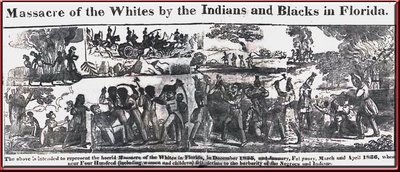In The News
It pays to read your local newspaper.
You may see your own name. That’s what happened to me yesterday.
No, I did not get arrested or anything like that.
And I missed reading last Sunday’s Times-Union, so I don’t have a clipping. But there was an article mentioning me and a history piece I wrote a couple of years ago about cars; actually the piece comes from a section of my book on Jacksonville history, Crackers & Carpetbaggers at www.bluefishbooks.info .
I was really surprised to run across my own name in the paper. I knew nothing about it beforehand and just saw this article days later. Here’s the article:
The Motown of the South
John W. Cowart has compiled an excellent history of the automobile in Jacksonville on his Web page, www.cowart.info. Among his findings:
- The first motorcar in Florida was a Locomobile, owned by Jacksonville undertaker Charles A Clark. By the end of 1903, there were 40 cars in the city.
- There were nine auto accidents in the city in 1906. Three of those involved collisions with horses.
- The first car dealer in the city opened in 1903.
- The Southern Automobile Manufacturing Co. opened a plant on Bay Street in 1906, making cars that sold for $400 each.
- The city's first traffic jam was in 1910, when 50 cars lined up to board the ferry across the St. Johns River. The old Acosta was the first highway bridge over the river, opening in 1921.
- Jacksonville was home to a Ford plant, near the western edge of the Mathews Bridge. The plant, which opened in 1925, churned out 45,00 Model T's a year from '25-'28 before switching to the Model A.
Vote for your favorite classic American auto in our Coolest American Car contest on Jacksonville.com.
That’s it.
That’s my name in last Sunday’s newspaper.
Oddly enough, although I often write about my walk with Christ—that sounds too grandiose—Let’s just call it my stumble with Christ—although I write about matters of faith in my own life, yet most often strangers e-mail me questions about local history rather than about faith.
For instance, recently a reader asked me for information about an 1830s Indian attack near Jacksonville.
During the Seminole Wars there were many such attacks. Here is an engraving of Florida Indian attacks from an 1836 newspaper in the Library of Congress:

The reader who e-mailed me had little information; I had less.
But we batted five or six e-mails back and forth developing leads until I tracked down an old newspaper reprint of an 1836 letter telling what had happened:
"It is again my painful duty to inform you of a most shocking Indian massacre - I mean the murder of Mr. John Tippins and family.
“Mr. Tippins was bringing his wife and children out of Florida to see her parents, and when within a few miles of her father's house, was fallen in with about seven Indians, between 10 o'clock, A.M. and 12 o'clock
“Mr. Tippens was shot from his horse, the Indians then made an easy capture of his helpless family and vented their savage spleen by beating them on the heads with their tomahawks.
“Mrs. Tippins lived (senseless) about forty hours, but did not speak; her skull was smashed in many places by the tomahawk. She died in the arms of her father, Mr. David Mizell.
“Her children are not yet dead, although the skull of each is fractured in many places by the tomahawks.
“This melancholy occasion took place in this county last Monday not far from Ocean Pond”.
A nearby resident, Mrs. Elisha Green, discovered the bloody scene. She left an eyewitness account saying that Mr. Tippens “died on the spot where he fell, shot from his horse”.
His full name was John Joshua Underwood Tippens.
His wife, Nancy Tippens, was scalped, and left to bleed to death.
Their three children were “chopped in their heads with tomahawks and slung to the ground”.
The next morning, Mrs. Green found Nancy. Tippens and a three year old girl, Cornelia, still clinging to life.
Nancy Tippens died soon after she was discovered. But the three-year-old Cornelia survived; she lived till 1926 dieing at the age of 88.
Not having a coffin, Mrs. Green buried the dead man, his wife and the other two children in the body of their wagon.
The place where they are buried is now called South Prong Cemetery; it was the Green family burial ground.
Legend has it that a standing wagon wheel marked the grave.
That wagon wheel has long since disappeared.
So there you have it. That is the latest news from last Sunday’s newspaper—and from 173 years ago
But my Good News, my most important news, is that Jesus loves us, and died for our sin, and He rose again from the dead.
No better news than that.
Please, visit my website for more www.cowart.info and feel free to look over and buy one of my books www.bluefishbooks.info
posted by John Cowart @ 4:59 AM


4 Comments:
John, that's pretty wild to open the paper and see your own name!
I'm glad you made the choice to read my blog! That's one choice that we should keep! ;)
Amen! That's always great news! Maybe you should read the paper more often. You'll never know what you might find there ;)
Congratulations!
No telling how many times you've been quoted without your knowing it.
jsjohnson@lane construct.com, email me and i can tell you more about this, my grandparents and parents are burried at south prong and i have pictures of the he stone marking the site of John Tippins in can email you these... thank steve johnson
Post a Comment
<< Home